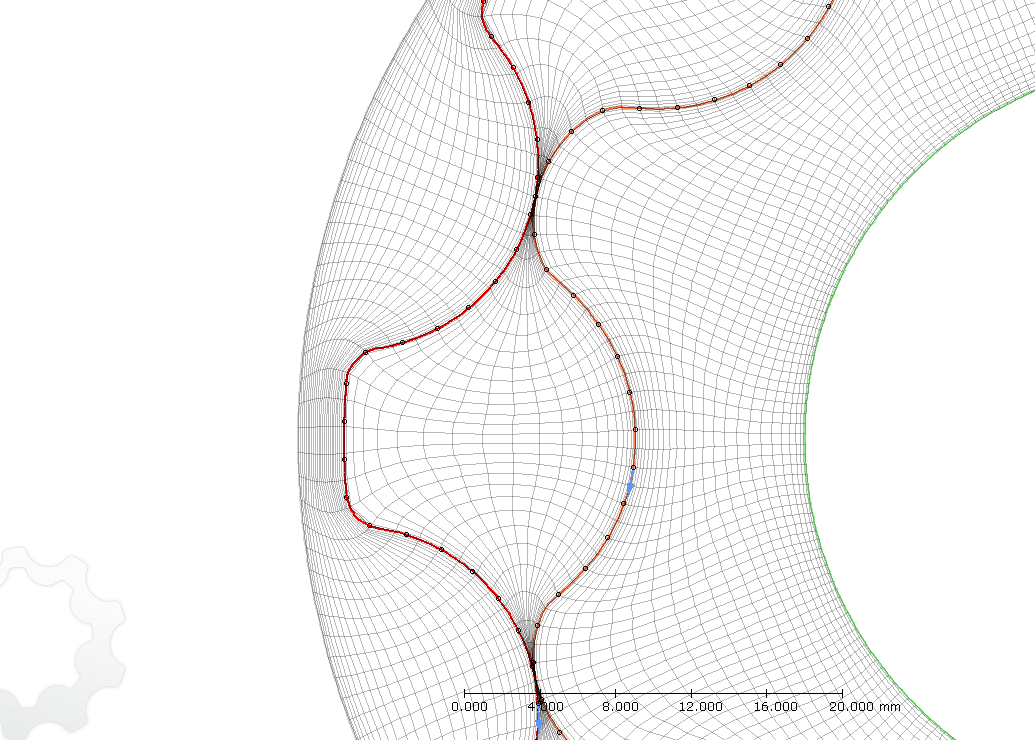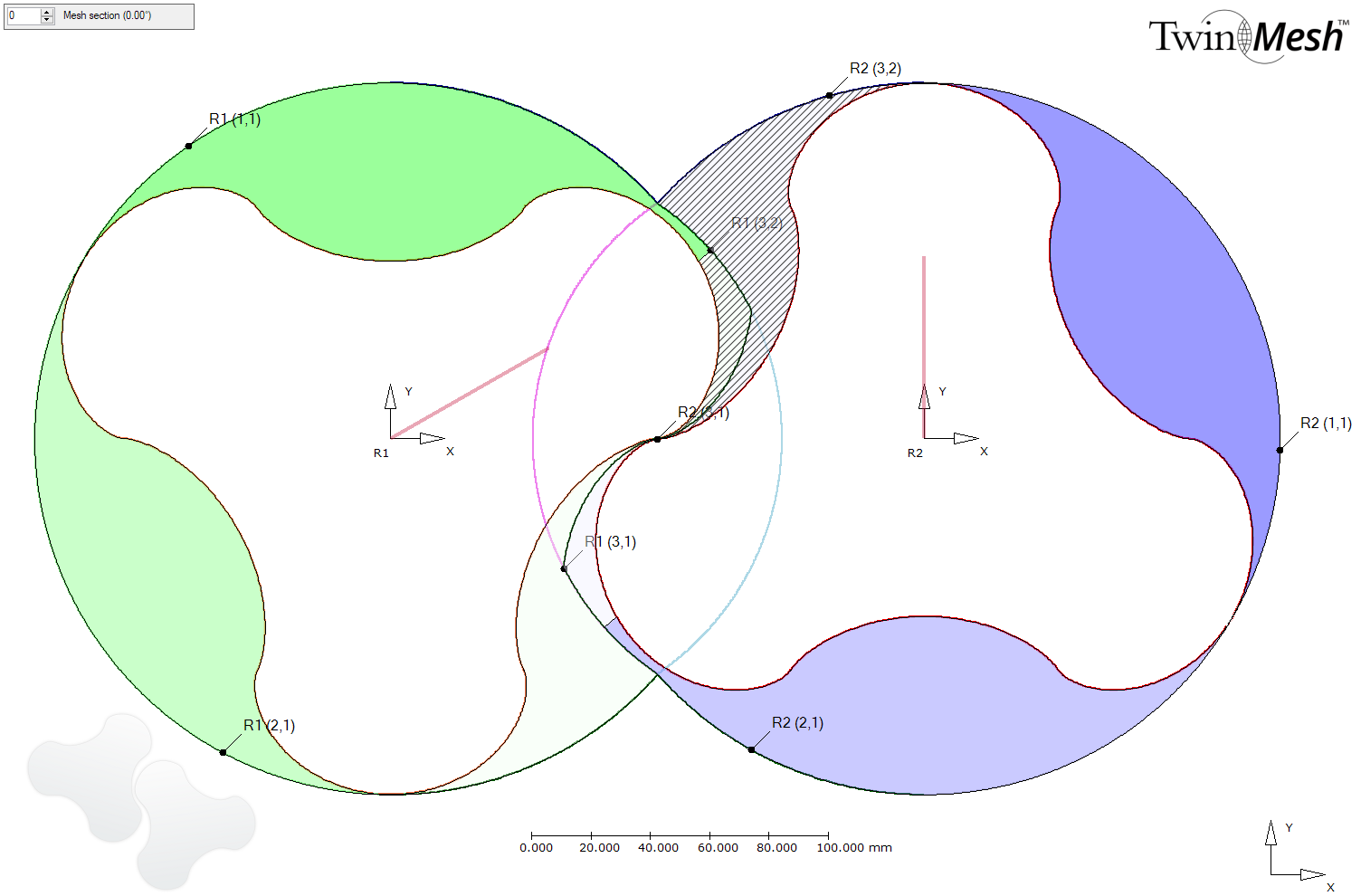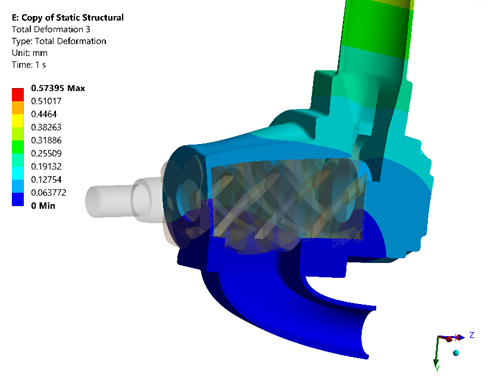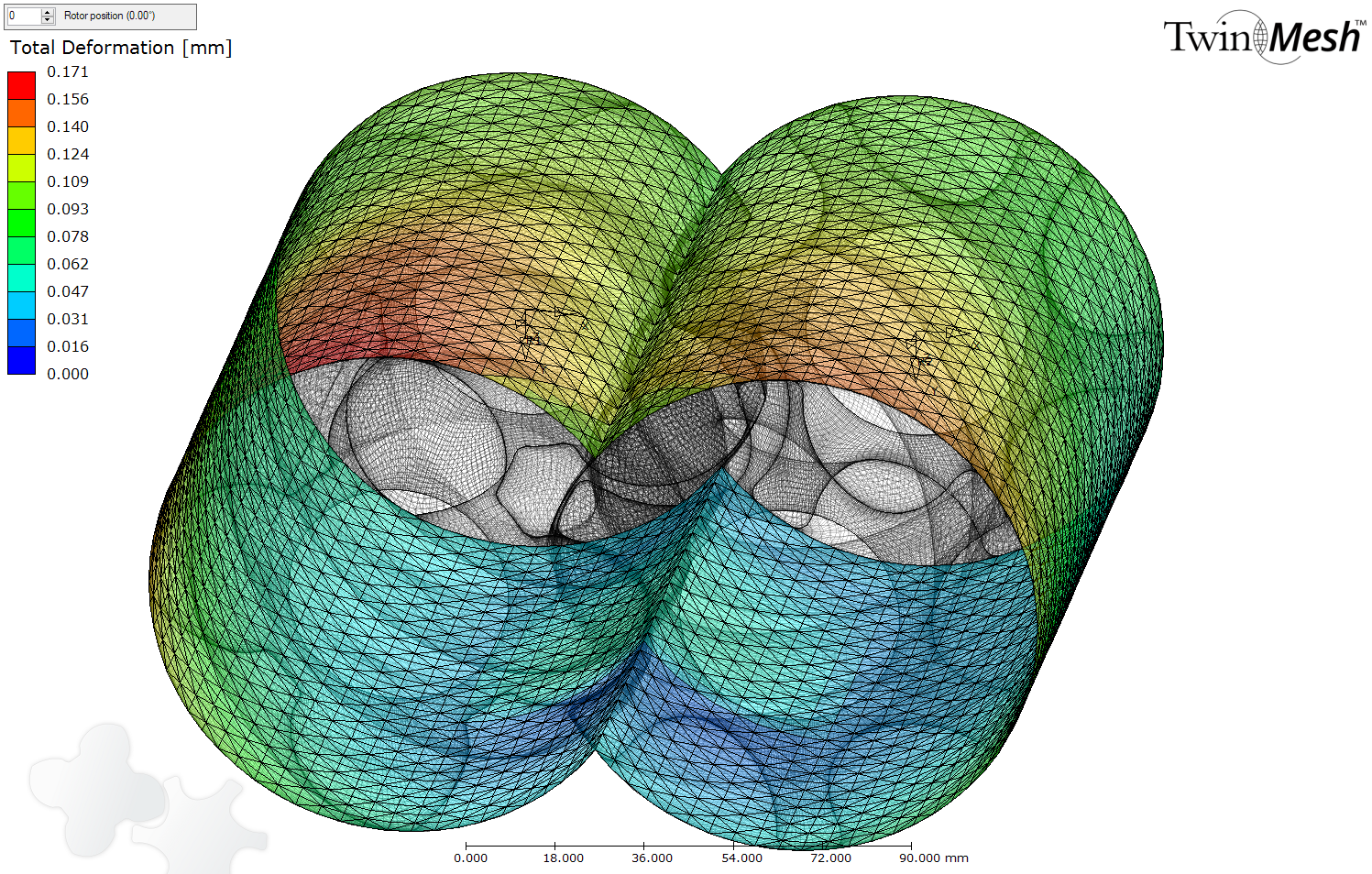We are pleased to announce the new release of TwinMesh™ 2023. We added two major features, one to add deformation to the rotors and the casing and one which allows to merge rotor chamber grids and axial gap grids into a single volume. This gives you an even more realistic flow behaviour inside the machine and simplifies simulation of oil-injected compressors.
Read further for getting information about new features in TwinMesh™ 2023:
In addition to the conformal gap mesh approach the axial gap meshes can now be merged to the main rotor meshes. This reduces the number of necessary grid interfaces and therefore it reduces the numerical losses. It also simplifies the numerical setup.

Spline interpolation for Ansys Fluent
The spline interpolation feature allows to run a simulation with a smaller angle step than exported by TwinMesh. The provided Fluent routines can now create meshes between two available rotational positions without regenerating the meshes in TwinMesh. This increases the flexibility to use the existing meshes with a required timestep for the simulation run.

TwinMesh can now calculate the chamber areas of the slice of the working chamber including the connection lengths between the different areas. The results can be exported into a CSV-file. It can be used in a simulation tool like Flownex to pre-calculate the behavior of the machine in a simplified way with reduced computational effort.
Additional mesh export types now also available for Ansys Fluent
It is now possible to export the rotor meshes using the “Twisted Hexa” or “Prism” option also for Ansys Fluent. In addition, the rotor meshes can be merged (available for “OuterFix” meshing method).
The radial and axial gaps of a working engine are different to the gaps of the “cold” machine depending on the deformation of the rotors and the casing. TwinMesh allows to import deformation data from Ansys structural mechanics using the STL export. The deformation data is added to the geometry of the “cold” machine used by the TwinMesh project. This feature is useful the get the flow behavior inside the machine more realistic.
Enjoy working with this great new release of the industry leading software for structured grid generation for rotary positive displacement machines! In order to get the new version of TwinMesh™ please contact us or your local TwinMesh™ reseller.




